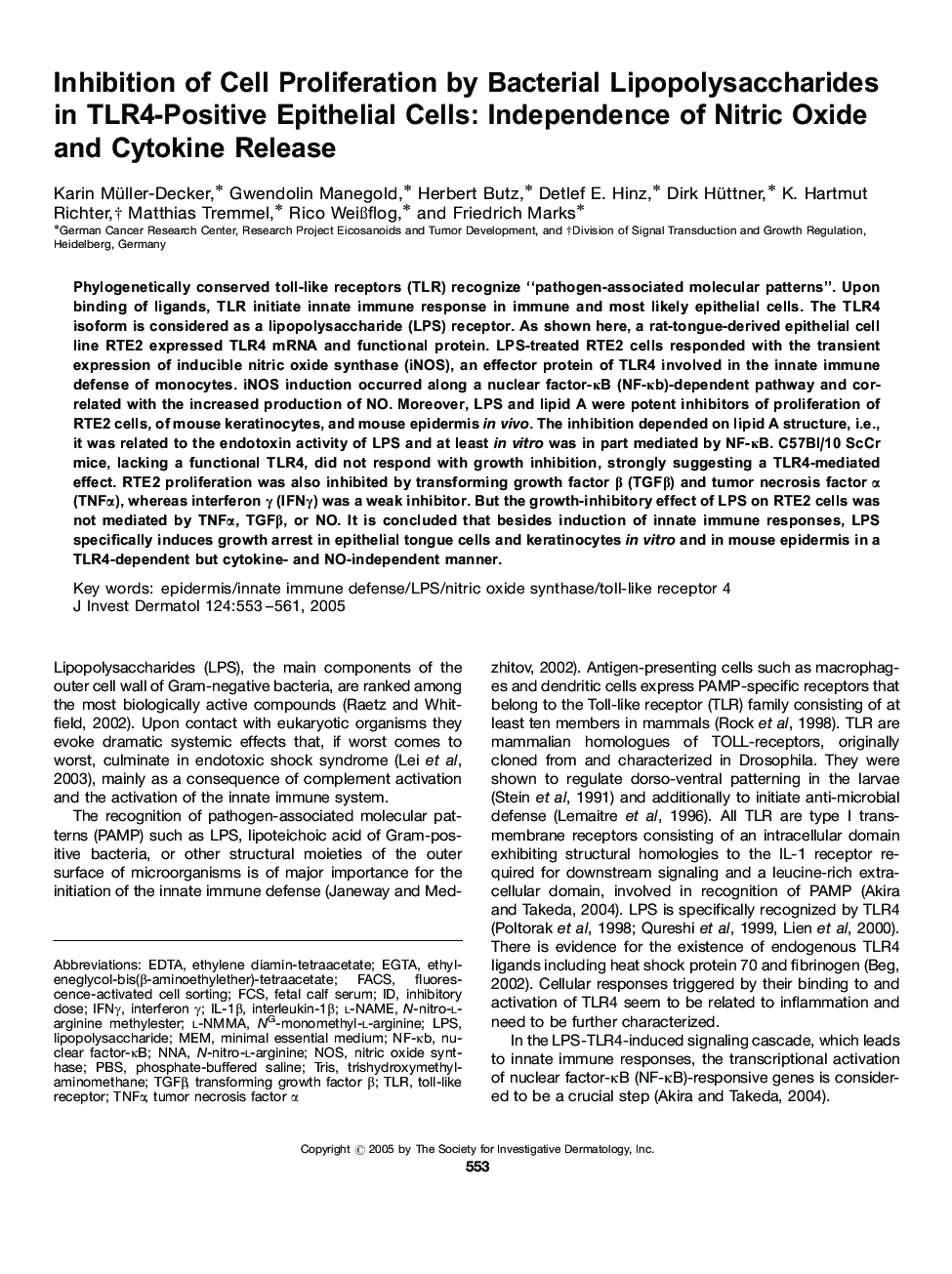| Article ID | Journal | Published Year | Pages | File Type |
|---|---|---|---|---|
| 9230311 | Journal of Investigative Dermatology | 2005 | 9 Pages |
Abstract
Phylogenetically conserved toll-like receptors (TLR) recognize “pathogen-associated molecular patterns”. Upon binding of ligands, TLR initiate innate immune response in immune and most likely epithelial cells. The TLR4 isoform is considered as a lipopolysaccharide (LPS) receptor. As shown here, a rat-tongue-derived epithelial cell line RTE2 expressed TLR4 mRNA and functional protein. LPS-treated RTE2 cells responded with the transient expression of inducible nitric oxide synthase (iNOS), an effector protein of TLR4 involved in the innate immune defense of monocytes. iNOS induction occurred along a nuclear factor-κB (NF-κb)-dependent pathway and correlated with the increased production of NO. Moreover, LPS and lipid A were potent inhibitors of proliferation of RTE2 cells, of mouse keratinocytes, and mouse epidermis in vivo. The inhibition depended on lipid A structure, i.e., it was related to the endotoxin activity of LPS and at least in vitro was in part mediated by NF-κB. C57Bl/10 ScCr mice, lacking a functional TLR4, did not respond with growth inhibition, strongly suggesting a TLR4-mediated effect. RTE2 proliferation was also inhibited by transforming growth factor β (TGFβ) and tumor necrosis factor α (TNFα), whereas interferon γ (IFNγ) was a weak inhibitor. But the growth-inhibitory effect of LPS on RTE2 cells was not mediated by TNFα, TGFβ, or NO. It is concluded that besides induction of innate immune responses, LPS specifically induces growth arrest in epithelial tongue cells and keratinocytes in vitro and in mouse epidermis in a TLR4-dependent but cytokine- and NO-independent manner.
Related Topics
Health Sciences
Medicine and Dentistry
Dermatology
Authors
Karin Müller-Decker, Gwendolin Manegold, Herbert Butz, Detlef E. Hinz, Dirk Hüttner, K. Hartmut Richter, Matthias Tremmel, Rico WeiÃflog, Friedrich Marks,
